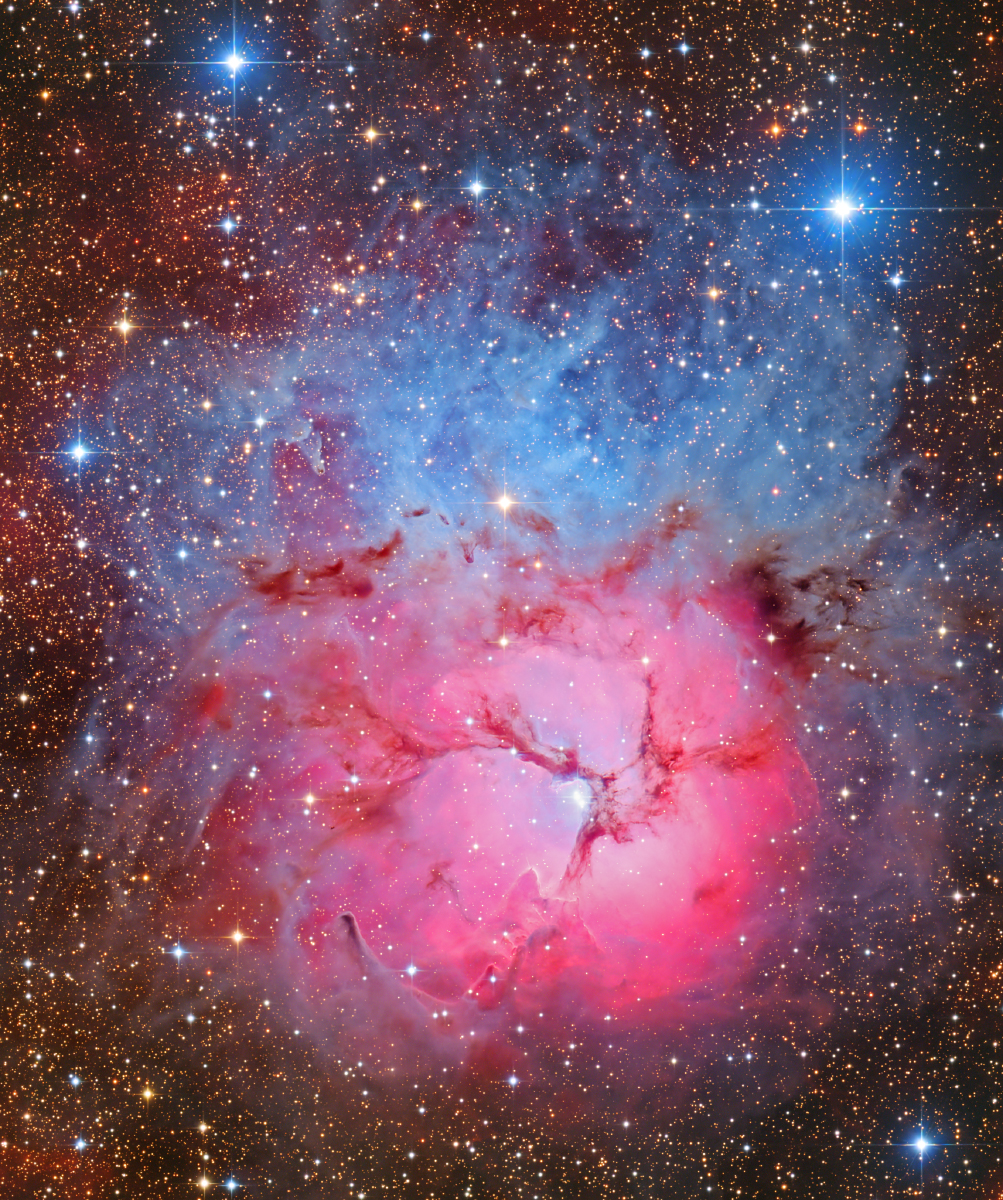
[back] M 20 (Trifid Nebula) in Sagittarius [NED]
Uncroped 100% version / Unbeschnittene 100%-Version (6049 x 4029 Pixel)

|
(c) 2024 All astro photo images are copyrighted. They may not be used or reproduced without explicit written permission from the authors. |
|
300" |
|
About this Image / Über dieses Bild
| CCD: | Omegon veTEC410c |
| Image Type, Orientation: | RGB, North is at 12:00h |
| Exposure time: | RGB: 51x300s (4:15 total) |
| Exposure date: |
August 1st,2nd 2024 |
| Location: | Capella Observatory at Skinakas, Crete/Greece,robotic (with babysitting from Bad Arolsen/Germany) |
| Filter: | Internal Bayer-Matrix |
| Instrument: | Ganymed 60cm-Hypergraph in primary focus (f=1840 mm) |
|
Final Image Seeing (FWHM): |
1.9" |
| Photographer: | Josef Pöpsel, Frank Sackenheim, Stefan Binnewies |
|
Remarks: |
The Trifid Nebula, Messier 20, is still relatively far south even from Crete and already poses a challenge for our telescope. Nevertheless, we took images of the nebula over two nights and were positively surprised that we could still reveal beautiful details of the object. M20 is an emission and reflection nebula. The blue clouds around the nebula are caused by the reflection of blue starlight. The emission, that is, the red glow of the hydrogen gas, is caused by the energetic O7-type star HD 164492. Jets can be observed in the nebula itself, which are a result of star formation. There is a well-known image of these jets taken by the Hubble Space Telescope. These jets can also be seen in our image below the central star. They look somewhat like a snail with its antennae. An older version of M20 done with Ganymed twenty years before from Namibia in secondary focus (2x1 mosaic) can be found here. |
|
Bemerkungen: |
Der Trifidnebel, Messier 20, steht auch von Kreta aus noch relativ weit im Süden und stellt schon eine Herausforderung für unser Teleskop dar. Nichtsdestotrotz haben wir in zwei Nächten Aufnahmen des Nebels gemacht und waren positiv überrascht, dass wir dem Objekt dennoch schöne Details entlocken konnten. M20 ist ein Emissions- und Reflexionsnebel. Die blauen Wolken um den Nebel entstehen durch die Reflexion des blauen Sternlichts. Die Emission, also das rote Leuchten des Wasserstoffgases, entsteht durch den energiereichen O7-Typ Stern HD 164492. Im Nebel selbst sind Jets zu beobachten, die eine Folge der Sternentstehung sind. Es gibt eine bekannte Aufnahme des Hubble-Weltraumteleskops dieser Jets. Auch in unserer Aufnahme sind diese Jets unterhalb des zentralen Sterns zu erkennen. Sie sehen ein wenig aus wie eine Schnecke mit ihren Fühlern. Eine ältere Version von M20, zwanzig Jahre vorher mit Ganymed in Namibia im Sekundärfokus fotografiert (2x1 Mosaik) ist hier zu finden. |
Back to the Diffuse Nebulae Overview / Zurück zur Diffuse-Nebel-Übersichtsseite